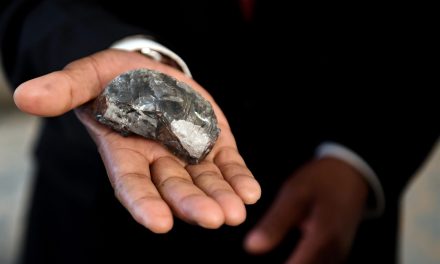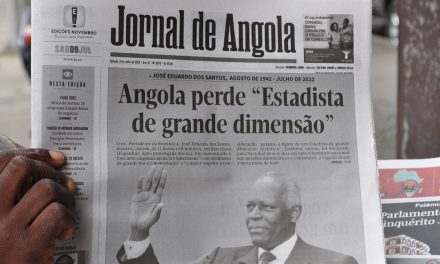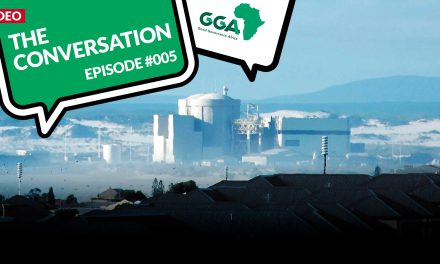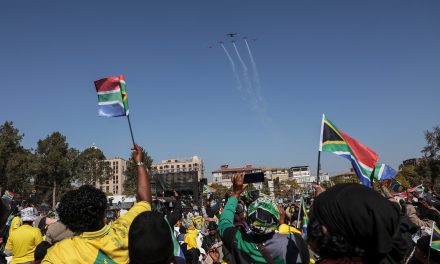Following the release of the drafted Integrated Resource Plan 2023 (IRP), the government’s blueprint for the country’s energy outlook, South Africans have a better perspective on how the Department of Mineral Resources and Energy seeks to address the country’s energy crisis.
Initially released in 2010, the IRP 2010-2030 sets a path to having new renewable power generation capacities of 3,725 megawatts and 3,200 MW, respectively, procured to feed into the national transmission grid.
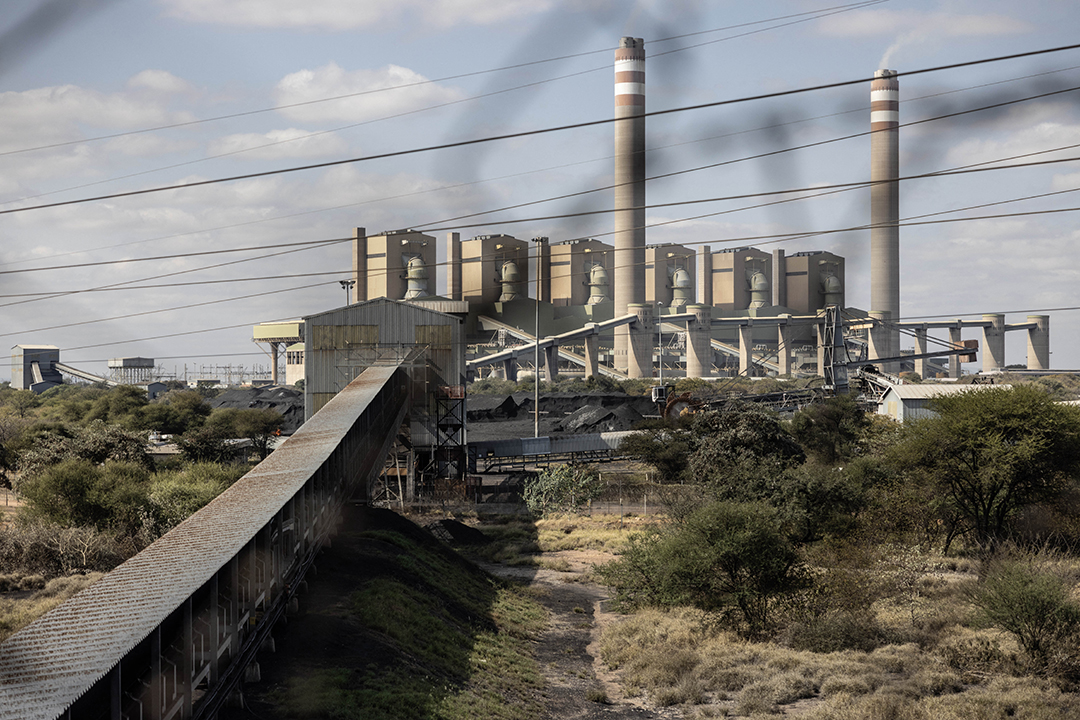
Eskom’s Matimba coal-powered power station in Lephalale, on June 6, 2023. With a capacity of 3,990 MW, Matimba is the largest direct dry-cooled power station in the world. Photo by Paul Botes/AFP
Additionally, the IRP is a living plan in alignment with the Renewable Energy Independent Power Producers Procurement Programme (renewable energy programme), launched in 2011, structured to have independent power producers contribute to the procurement goals through periodic bidding windows to supply electricity and meet socio-economic development objectives.
Its main purpose is to foster a renewable energy sector and specifically address the gap in electricity supply and demand management solutions, offering a flexible procurement mechanism to respond to pressing power infrastructure development needs and reducing carbon emissions through electricity generation.
While Africa contributes only 4% of global carbon emissions, South Africa remains an outlier on the continent, contributing 435.9 million tonnes, making it the 14th-largest emitter globally.
Since 2011, the renewable energy programme has attracted about R209.7 billion through 92 approved projects, totalling 6,327 MW of capacity. Given its complementary endowment of wind and solar power potential, South Africa remains among the world’s highest-ranked renewable energy investment destinations.
As such, the uptake of private equity investments in the energy sector has been progressing gradually, and fund managers have seen the opportunities associated with addressing South Africa’s energy crisis.
In the past year, African Infrastructure Investment Managers have committed to providing up to $90 million in initial equity funding for an initiative that aims to develop, finance, and operate a portfolio of more than one gigawatt of renewable energy assets.
Research by Good Governance Africa highlights opportunities in transmission enhancements to enable grid capacity, the need for public-private partnerships for grid expansion, exit opportunities for private equity investors, and policies at the national level to reform the electricity supply industry.
The IRP 2023, President Cyril Ramaphosa’s ambitious plan to address the country’s energy crisis, presented during the State of the Nation address (SONA), focuses on ensuring the security of electricity supply and management of generation costs on the economy over the long term while focusing on increasing electricity supply in the short to medium term.
Accordingly, the IRP 2023 is divided into two primary sets of time horizons.
Horizon 1 focuses on the immediate interventions required to address the country’s energy crisis, with a timeline of 2023 to 2030. These include extending the lifespan of coal-fired power plants where feasible, the accelerated deployment of dispatchable energy generation, and the development of the transmission grid in alignment with the Transmission Development Plan.
Horizon 2 focuses on the timeline from 2031 to 2050. It presents different scenarios for the development of an energy mix combining low-cost generation with decarbonisation and security of supply.
The IRP 2023 has been criticised as flawed for a variety of reasons, including the methodology used by the mineral resources and energy department, and its misalignment with South Africa’s obligations under the 2015 Paris Agreement and ambitions under the just energy transition. These raise the critical importance of in-depth public knowledge of the document ahead of its finalisation.
While the IRP 2023 makes mention of the future roll-out of energy generation through public and private procurement programmes (including the renewable energy programme), it requires greater connection to renewable energy plans such as the South African Renewable Energy Master Plan, the Just Energy Transition Investment Plan, and how they may factor into both time horizons.
The lack of connection between these plans raises the question of whether the different departments concerned with the development of the country’s energy industry are speaking to each other to develop well-coordinated energy strategies and policies.
The combination of the South African Renewable Energy Master Plan, the renewable energy programme and the Just Energy Transition Investment Plan work optimally to enable the localisation of elements in the renewable energy value chain over the long term, while the focus on clean coal technologies risks distracting away from it.
Procurement from the renewable energy programme is expected to contribute to the IRP’s goal of promoting security in electricity supply. However, the IRP does not make mention of the difficulties facing private sector procurement in achieving financial closure and bringing electrons onto the grid.
The effective implementation of the energy mix envisioned in the various scenarios in Horizon 2 requires the expansion of transmission infrastructure. Inadequate transition infrastructure has been identified as a limiting factor for the expansion of electricity generation. This is demonstrated by the failure of the renewable energy programme Bid Window 6, where a lack of grid access resulted in a limited number of preferred bidders significantly below the allocated capacity of 4,200 MW.
Addressing the limitations of insufficient grid capacity will require a public-private partnership for the development of transmission infrastructure, as mentioned by Ramaphosa during SONA.
In its present state, the IRP does not make sufficient mention of the proposed strategy for electricity supply industry reform or how electricity supply industry reform and the unbundling of Eskom are expected to affect electricity supply and demand planning.
Similarly, the IRP does not include mention of the economic context, including municipal non-payment, Eskom’s debt, or electricity tariffs, despite them having a direct effect on both electricity supply and demand.
Considering these limitations and the challenges presented, there must be greater collaboration between the Mineral Resources and Energy Department, the Ministry of Electricity, the Department of Forestry, Fisheries and Environment, the Trade and Industry Department, and the Treasury when considering the implications of the IRP on the focuses and interests of these different departments.
Additionally, the various concerned stakeholders, including research institutions, independent power producers, and companies, should be involved in modifying the policy beyond the standard consultative process.
Addressing difficulties facing private sector companies in achieving financial closure for the projects should receive greater attention. These entities should share and discuss the bottlenecks and limitations they experience.
Exploring opportunities for public-private cooperation in developing electricity transmission infrastructure is necessary.
As the country moves towards the finalisation of the IRP, there is a requirement to connect it to the electricity supply industry reform. Without connecting the IRP to industrial policy plans in the form of the South African Renewable Energy Master Plan and the Just Energy Transition Partnerships, and the Just Energy Transition Investment Plan, the inclusion of potential supply and demand drivers such as electricity tariffs and electricity supply industry reform, the IRP 2023 risks not seeking to address the issues in a holistic and future-looking manner.
- This article first appeared in the Mail & Guardian.



